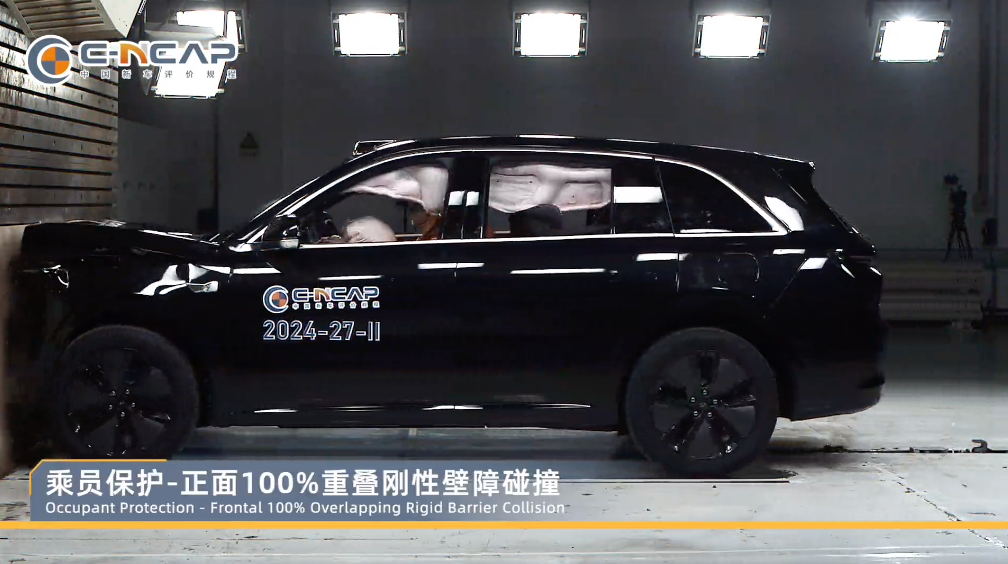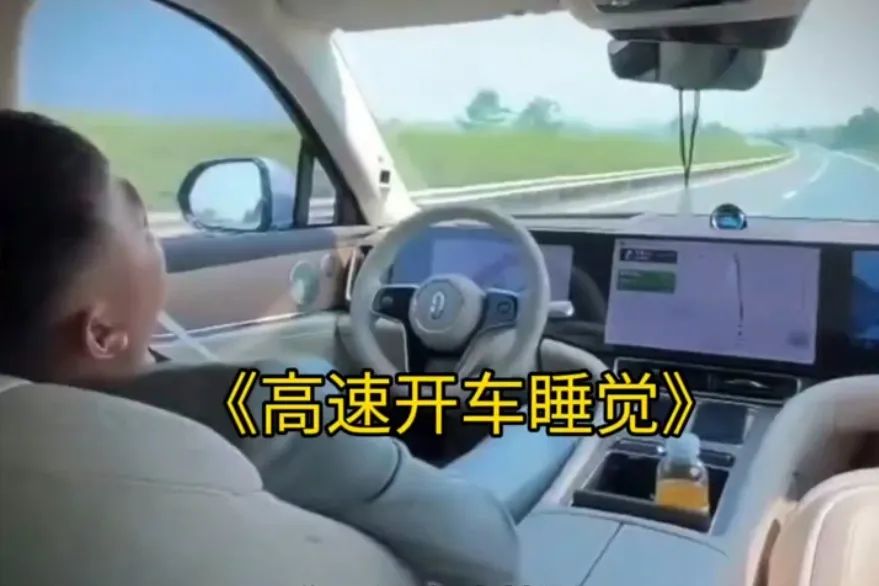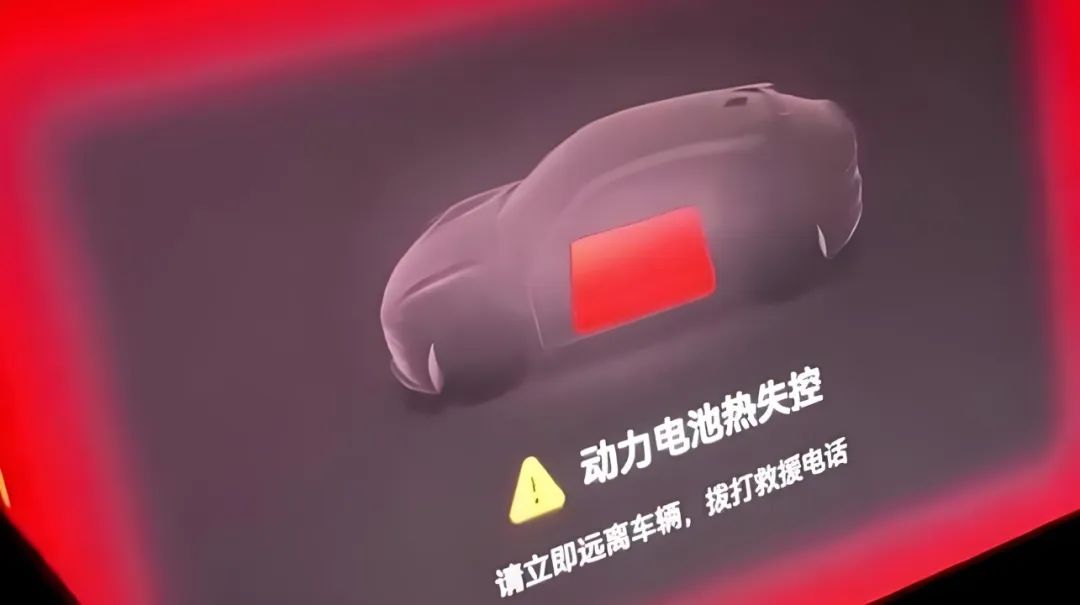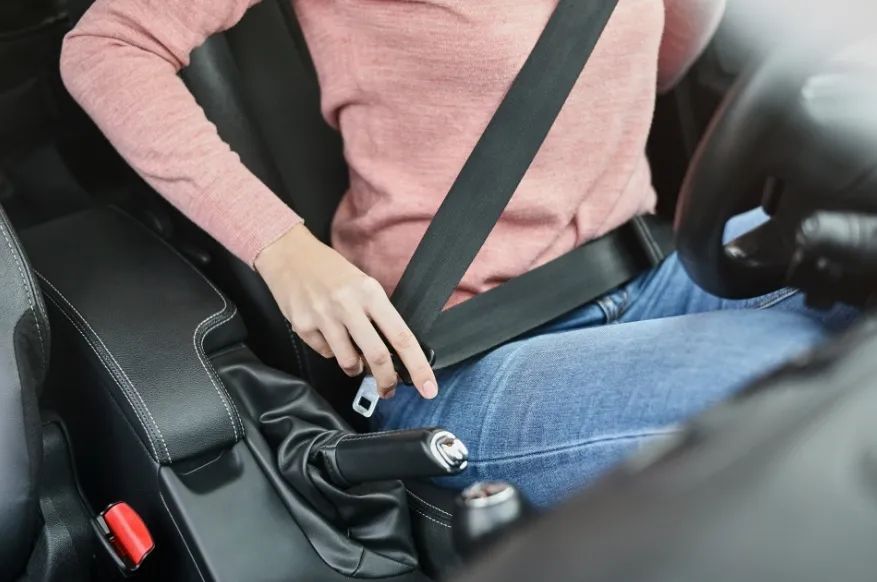It's time to upgrade the mandatory standards for automotive safety
![]() 04/07 2025
04/07 2025
![]() 508
508
Introduction
Introduction
The mandatory safety standards have long been unable to keep up with the pace of development in the new automotive era.
A recent traffic accident involving a smart car collision and explosion on a highway, which claimed the lives of three teenage girls and garnered significant attention due to Xiaomi's involvement, has been thrust into the spotlight of public opinion. Many articles have analyzed and commented on this incident, ranging from issues with intelligent driving to electric vehicle battery safety, from warnings about personal safe driving to deviations or distortions in internet-era marketing. Most of these articles have expressed profound and accurate insights.
It can be said that this tragic lesson has made more people aware of or pay attention to the fact that cars are not just oversized smartphones, and that so-called smart cars cannot overshadow consumers' emphasis on and demand for safety, which is a fundamental element.
However, the reality is that Xiaomi's accident is not the first of its kind. From Tesla to NIO and AITO, the so-called smart cars launched by new-energy vehicle enterprises, while bringing technological and novel experiences, have frequently caused tragedies of varying severity due to similar issues, even leading to the loss of precious and irreplaceable lives.
On the path of avoiding the recurrence of yesterday's tragedies, it is worth for every practitioner and relevant personnel in this industry to slow down and carefully consider the situation.

In fact, besides the issues discussed by many people as mentioned above, there is another element that cannot be ignored: the rapid development of smart cars has made it difficult for many regulations and restrictions to catch up and adapt to the current pace. In other words, using the standards of past gasoline vehicles or traditional cars to manage a more complex set of rules involving chips, systems, and algorithms is far behind the times.
It is precisely because of the gaps and neglect in regulations and oversight that potential and low-probability safety hazards continue to occur, which to a certain extent severely impacts the pace of automotive innovation and progress, constantly provoking a crisis of trust between users and technology.
For example, how can seat belt reminders ensure 100% compliance with usage regulations?
When facing new technologies and consumer trends such as rear-seat tray tables, entertainment screens, zero-gravity seats, and opposing seats, do the mandatory safety regulations really provide a double insurance?
Do new energy vehicles fully meet the mandatory specifications of not igniting or exploding when encountering battery collision safety issues?
In the process of transitioning from L2 driving assistance to L4, does the driver monitoring system truly play a primary role in ensuring safety?
When enterprises intentionally or unintentionally touch the red line of safety standards, does regulation truly have a deterrent effect?
…
In the new era of software-defined automobiles, the mandatory technical safety standards really need to be continuously upgraded.
01 The standards of the old era cannot contain the surging new automobiles
According to industry data, the number of people killed in car accidents worldwide each year reaches more than 1.1 million. In China, with abundant road resources, a large number of cars, and complex and numerous traffic participants, there are nearly 150,000 automobile traffic accidents each year, resulting in approximately 100,000 fatalities. The losses and sorrows brought to society, the economy, individuals, and families cannot be presented or described with specific data.
How can we make cars safer to reduce the harm caused by so many traffic accidents to people? In fact, with the joint efforts of enterprises and regulations, Chinese automobile enterprises have already done relatively well. Basically, the vast majority of models can meet the China New Car Assessment Program (C-NCAP) standards, and with the improvement of technical standards every few years, including the entry of institutions such as China Insurance Research Institute (CIRI), the safety factor of automobiles has also been further strengthened.
But this is far from enough. Ideally, the harm caused by car accidents to people should be reduced to zero. Never evaluate automotive safety regulations using probability and survivorship bias, because for independent individuals, accidents are a matter of zero or 100%. This requires automobile enterprises and regulators to make no compromises on automobile safety.

For example, in the case of intelligent driving assistance, there are no relevant laws and regulations to refer to based on past standards and experiences. Currently, the only searchable item is the mandatory national standard project plan for "Safety Requirements for Combined Driving Assistance Systems of Intelligent Connected Vehicles" issued by the Ministry of Industry and Information Technology at the end of 2024, but this plan is expected to be implemented by the end of 2026.
In terms of the entire automotive industry's norms, intelligent driving is still a very new technological category. Taking the most basic active safety function, Automatic Emergency Braking (AEB), as an example, there are significant differences in usage rules, functional failures, and effective ranges for the same AEB function across different automobile enterprises and models.
In addition, relevant testing standards have not kept up with the pace of industry development. And it is precisely due to the existence of the above-mentioned differences that consumers have blind spots in their understanding of the current AEB function when driving vehicles of different brands or even different configuration versions of the same model, leading to the accidental occurrence of many accidents.
And for the DMS driver monitoring system and exit mechanism in driving assistance, each automobile enterprise is also different. For example, how many seconds after letting go of the steering wheel or looking away does a reminder need to be given, and how many seconds does it take to forcibly exit intelligent driving mode? After exiting intelligent driving mode, should the vehicle stay in place with hazard lights on, pull over, or even activate the ECALL system? Basically, there is no very standardized and unified criterion.

On some social media platforms, it is often seen that car owners use gravity sensing balls to deceive the system's detection, driving vehicles while playing games or sleeping or even leaving the driver's seat. These dangerous behaviors that leave safety loopholes in automobiles also deserve the attention of automobile enterprises and industry standards.
Can there be some tough standards, such as visual monitoring and seat gravity sensing, to restrict drivers from monitoring the steering wheel and road conditions at any time during intelligent driving? Just like the punishment mechanism in the Tesla system, which gives a score to restrict the use of FSD after dangerous driving behavior occurs. In fact, this strategy is the best way to regulate user behavior.
Another example is the process of L2 driving assistance, specifically regarding speed limit reminders on the road. After the system recognizes them, does it reduce speed or maintain the original set speed? In this regard, each enterprise is basically different. Including Xiaomi's SU7, if it could have recognized the speed limit reminder in construction sections under low-light conditions and executed it according to standards, the tragedy might not have occurred.
Especially now, in the development and promotion of intelligent driving assistance, including consumer education and popularization, it is basically dominated by new-energy vehicle enterprises with severely insufficient experience in vehicle manufacturing and accumulation of safety technical standards. This is inherently a severe test for the adherence to the safety bottom line of the entire industry.

Taking battery safety as another example, the "Safety Requirements for Traction Batteries for Electric Vehicles" issued by the Ministry of Industry and Information Technology in 2020 stipulates that after a battery cell undergoes thermal runaway, the battery system should not ignite or explode within 5 minutes to ensure that occupants have enough time to escape safely. In the 2024 draft for comment, the Ministry of Industry and Information Technology raised the thermal propagation requirement to "no ignition, no explosion" and removed the time limit, but this technical specification plan is not scheduled to be implemented until 2026.
As of February 2024, 78% of surveyed enterprises (including vehicle and battery manufacturers) already possess the technical reserves for "no ignition, no explosion", and 14% plan to meet the standard between 2026 and 2027. Meanwhile, the test standard for battery ignition and explosion only covers collision scenarios at speeds ≤50 km/h, unable to simulate the damage to batteries caused by highway accidents (such as 80-120 km/h).
Obviously, from the perspective of national regulations and oversight, the safety technical standards are not very stringent. To a certain extent, they encourage the development and evolution of new energy and smart cars, promoting the process of Chinese automobiles overtaking in lane changes. However, it must also be noted that without a safety bottom line as a restraint, injuries and fatalities will inevitably occur in disordered competition and development, which is surely not what the entire society and industry wish to see.
02 Safety cannot tolerate any compromises
The intelligent driving that is currently being hotly discussed is actually just driving assistance, which is the consensus of the industry. However, in the public opinion guidance and promotion of enterprises, intelligent driving is regarded as the core competitive territory in and after 2025.
In 2023, Wang Chuanfu of BYD expressed his views on intelligent driving, believing that autonomous driving is "the emperor's new clothes coerced by capital" and that the existing legal framework cannot solve such problems. Nowadays, many consumers are blinded by the promotion of intelligent driving, thinking that XXX's intelligent driving is very powerful and can help you drive. This kind of thinking and behavior is very dangerous.
Li Shufu of Geely also once said that Volvo started researching autonomous driving technology more than a decade ago and has consistently done so to this day. Why hasn't it been mass-produced yet? Because once in autonomous driving mode, the driver can sleep and rest instead of being on edge and constantly reminded to take over manually. This is both a respect and awe for life and a care for the brand.
Of course, with the advancement of technology today and consumers' increasing demands for automotive products and functions, corresponding safety technical standards should be upgraded accordingly.

Taking the automobile seat belt as an example, this life-saving feature also has issues with mandatory specifications that are not sufficiently safe. Although the Road Traffic Law stipulates that all occupants must wear seat belts, not everyone complies. At this time, it is necessary for regulators and automobile enterprises to jointly promote the protection of occupants by seat belts.
Especially for second-row and third-row reminders, the association between intelligent driving systems and seat belts, including some users inserting the seat belt first and then sitting on it, or purchasing seat belt clips to bypass the system's detection, although it may seem like users are "asking for it", it would be more accurate to say that automobile enterprises and regulators have left opportunities for unsafe behaviors in terms of technology.
Therefore, the mandatory unification of such safety technical standards is very necessary. For example, using more advanced seat belt detection facilities such as visual recognition + sensor sensing, and investing in safety should inherently be a common consensus in the industry and among automobile enterprises. Even if there is a certain conflict between the beeping sound and the user experience, in the face of safety, all experiences should make way.
Moreover, in the new automotive era, configurations and functions such as rear-seat tray tables, zero-gravity seats, rear-seat steel plates, and even automotive chips, which pose risks to safe driving, should also be included in the scope of mandatory safety standards.

Previously, the author chatted with a leading engineer about why they didn't install tray tables and zero-gravity seats in their new energy SUV. Because the usage boundary of new energy vehicles has expanded, and the in-car usage experience time in the parked state has become longer and longer, tray tables and zero-gravity seats are very suitable for resting.
The engineer said that such configurations pose hidden dangers to driving safety. For example, in the event of an accident during driving, an open tray table can intrude into the consumer's body and cause injury; once the zero-gravity seat is reclined, the restraint provided by the seat belt during driving will fail. Although these are low-probability events, some compromises were made for safety in the end.
However, on the other hand, can't these configurations needed by users be equipped with some reminder and restriction functions, just like seat belts? For example, setting a safety reminder that cannot be turned off when the tray table and zero-gravity seat are not returned to their original positions during driving to ensure driving safety. In fact, these enterprises can fully achieve this with current technology. As for why they don't, it may be due to cost pressure on the one hand, and on the other hand, because it is not a mandatory specification.
Another example is automotive chips. During a period when chips were in short supply, some enterprises used consumer-grade chips in automobiles, replacing the use of automotive-grade chips. If there are no issues, it's fine, but once high temperatures or extreme cold occur, and the consumer-grade chips fail, it will endanger driving safety and human lives.
How to prevent enterprises from touching the red line and bottom line of safety? Besides formulating mandatory laws and regulations, tough punishment measures are also necessary. It is also important to establish an industry-wide oversight mechanism for relevant technical standards, especially a supervision and reporting mechanism between enterprises. Because many times, ordinary consumers find it difficult to accurately identify and understand technical evaluations related to automotive safety. Only by allowing experts to supervise and regulate and making those automobile enterprises that take risks pay a painful price can we ensure that every car manufactured by an automobile factory meets higher safety standards, jointly promoting industry progress.
Every year, so many people die in traffic accidents. They should not just be cold numbers. Behind the accumulation of experience and lessons, these data and reports should also be shared with the entire industry, and more safety risks should be identified to improve technology and achieve industry-wide promotion. Because automotive safety is not only related to the life and property safety of every occupant but also the cornerstone for the steady progress of the entire automotive industry.
Finally, as ordinary consumers, it is important to understand that regarding automotive safety, don't just listen to what a brand or automobile enterprise says, but look at what they do and what happens in terms of safety.
Editor-in-Charge: Du Yuxin Editor: Wang Yue







